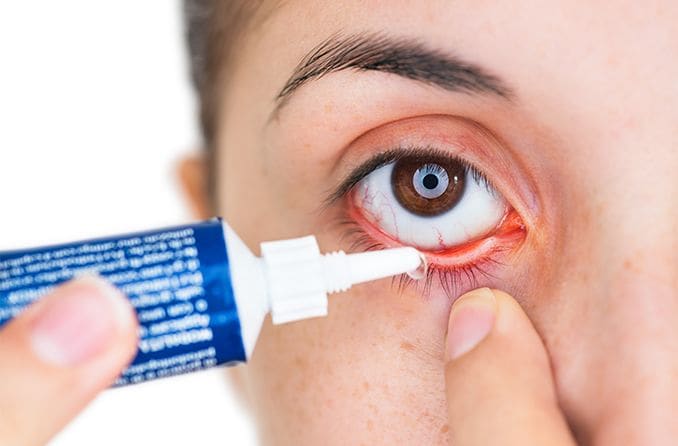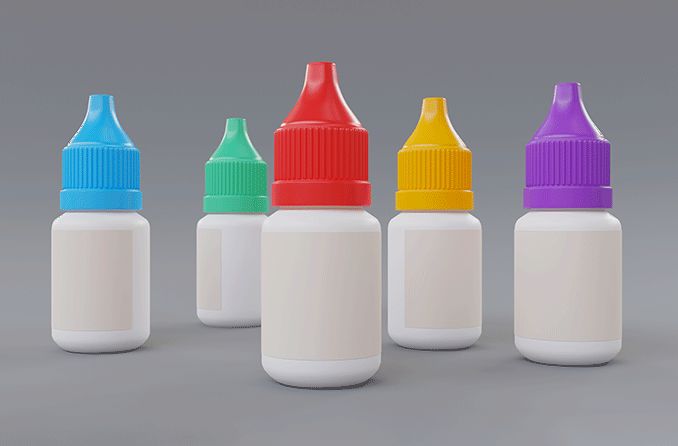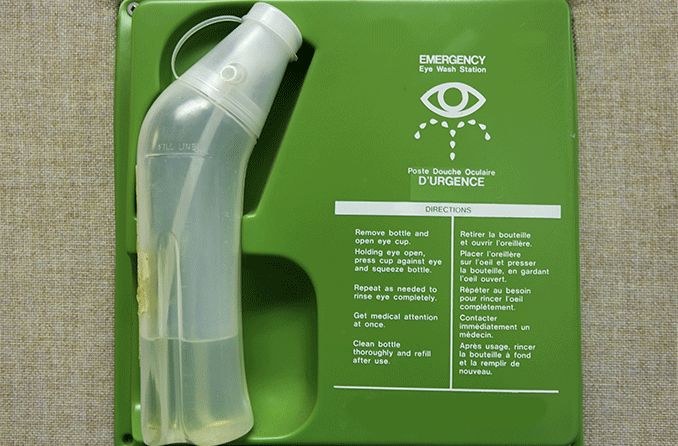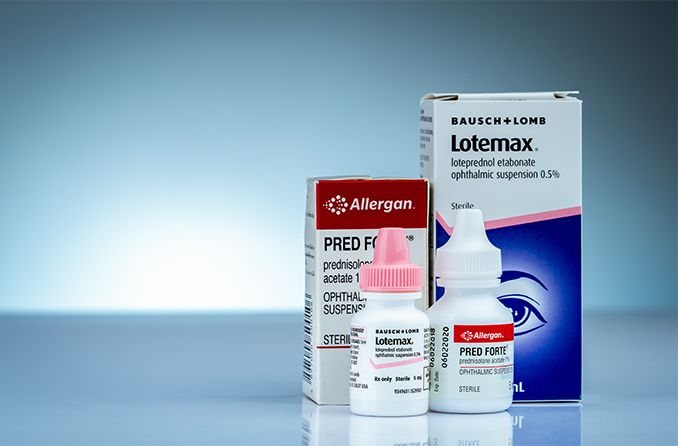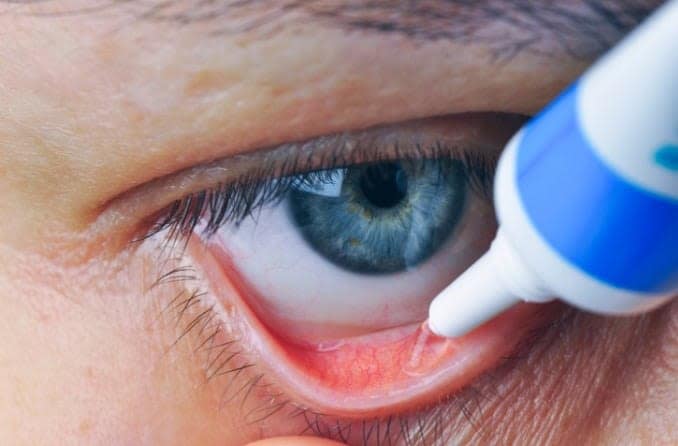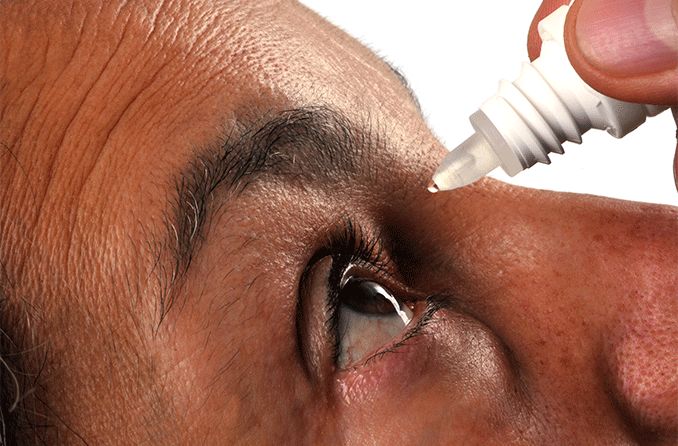Cycloplegic and mydriatic eye drops are special eye drops used to dilate the pupils and/or relax the eye muscles during an eye exam or other ophthalmic procedure. Cycloplegic drops have a greater impact on relaxing the focusing system. Mydriatic drops have a stronger dilating effect.
A dilated pupil makes it possible for an eye doctor to get a detailed look at the back of the eye and determine if there are any problems. The temporary relaxation of the focusing muscles may allow your eye doctor to get an assessment of your eyeglasses prescription.
In some cases, cycloplegic and mydriatic eye drops can also be used to relieve ocular pain after a surgery. They can also be used to treat a condition that causes ocular discomfort.
What are cycloplegic eye drops?
Cycloplegic eye drops are used to achieve cycloplegia, in preparation for an eye exam or other ocular procedure. By definition, cycloplegia is when the ciliary muscle is paralyzed. The ciliary muscle is the structure of the eye that adjusts the lens in order to focus on objects.
Cycloplegia allows for the pupils to dilate and prevents accommodation. Accommodation is the ability of the eye to focus.
What are they used for?
Eye doctors use cycloplegic drugs for a number of reasons. Sometimes cycloplegics are used in preparation for a refraction. This cycloplegic refraction can help to evaluate the necessary glasses or contact lens description.
Children and adults who experience focusing or vision problems may require a cycloplegic refraction. Temporarily paralyzing the eye muscles that control accommodation helps to prevent a patient from over or under accommodating.
Over or under accommodation can mask certain prescriptions. It is most commonly necessary to perform cycloplegic refractions on young children, farsighted (hyperopic) patients and patients with an esotropia (eye turn in).
In other instances, cycloplegics can be used to relieve pain or discomfort after a surgical procedure, since they relax the eye muscles. By eliminating the consistent movement of the pupil and focusing of the eye muscles, there is a reduction in pain caused by inflammation.
They may be recommended following procedures such as:
Some doctors may also prescribe cycloplegic eye drops as a treatment for corneal abrasion. Corneal abrasions present with intense levels of pain that are lessened with cycloplegic eye drops.
SEE RELATED: How long do eyes stay dilated after an eye exam?
What are mydriatic eye drops?
“Mydriasis” is a word used to describe dilated pupils. Mydriatic eye drops are a way to achieve mydriasis. The drops can also relax the eye’s focusing muscles. Mydriatic drops have a less powerful effect than the cycloplegic agents.
An eye doctor may use mydriatic eye drops to dilate your pupils during a comprehensive eye exam. This helps them to get a view of the retina and other internal parts of the eye.
What are they used for?
Mydriatic drugs aren’t just for dilation in eye exams. They can also be prescribed to treat certain eye conditions, such as:
Uveitis (swelling or inflammation inside the eye)
Iritis (inflammation of the iris – colored part of the eye)
Toxocariasis (used to minimize swelling or inflammation inside the eye)
Potential side effects of cycloplegic and mydriatic eye drops
Different cycloplegic and mydriatic drops have different side effects based on the potency of each agent. The most commonly noted side effects are significantly blurred near vision and light sensitivity (photophobia).
Patients are educated about these symptoms prior to the installation of the dilating agents. Patients are often given disposable sunwear to combat the light sensitivity.
Farsighted patients will experience more debilitating blur than patients with other types of refractive error. Their blurred vision is often present at near and far distances.
Some dilating drops last four to six hours after dilation. Some drops have a longer effect in the eight- to 24-hour range. Lightly pigmented patients note a greater effect of the dilating agents than darkly pigmented patients. This is due to the absorption of the medication by the pigment that is present.
You should tell your doctor if the following symptoms are severe or persistent beyond the expected time frame:
Burning or stinging
Extreme side effects that should be reported immediately include:
Fever
Dry mouth
Rash
Drowsiness
Decreased sweating
Children may experience additional side effects to those listed above. The following symptoms, most often found in children, are severe and should also be reported promptly:
Restlessness
Hallucinations
Slurred speech
Confusion
Coordination problems
Hyperactivity
SEE RELATED: What not to do after eye dilation
Other types of dilating eye drops
Some examples of cycloplegic and mydriatic eye drops include:
Tropicamide (used for standard dilations)
Cyclopentolate (used for cycloplegic refraction)
Atropine (used to treat amblyopia and esotropia)
Homatropine (used to treat uveitis)
Scopolamine (used when a patient is allergic to other dilating drops)
There are other dilating eye drops aside from mydriatics and cycloplegics. A common example is an agent called phenylephrine, which is part of a class of drugs called adrenergic agonists. Phenylephrine is available in 2.5% and 10% strengths. It causes dilation, but not cycloplegia. Only the 2.5% strength is used clinically. The 10% phenylephrine is for surgical procedures.
The use of low-dose atropine eye drops in slowing myopia progression
Atropine may be used off-label to treat the progression of myopia. Myopia (nearsightedness) is a type of refractive error. Onset tends to occur at school age and often increases year after year.
Research from the past decade shows that myopia may be slowed with the daily administration of low-dose atropine eye drops. Atropine is an eye drop that has a 1.0% concentration, and when used as a dilation and cycloplegic agent, it has an effect that lasts for two full weeks.
A study called Atropine for the Treatment of Myopia (ATOM1), among others, looked at the side effects and effectiveness of a diluted version of atropine in hundreds of myopic children.
The research found that very low doses of atropine can prevent or slow myopia progression. Instead of the 1.0 % atropine, the myopia progression treatment may utilize 0.01%, 0.025% or 0.05%. The low concentration of the eye drops also helps prevent side effects, like blurred vision and light sensitivity.
Dilating and cycloplegic eye drops have multiple uses in vision care. They are most commonly used as a tool in the comprehensive vision exam. These agents may also be used to control ocular pain, treat amblyopia and slow the progression of myopia.
Speak to your eye care professional to fully understand which eye drops are best for your vision examination or any necessary ocular treatment.

